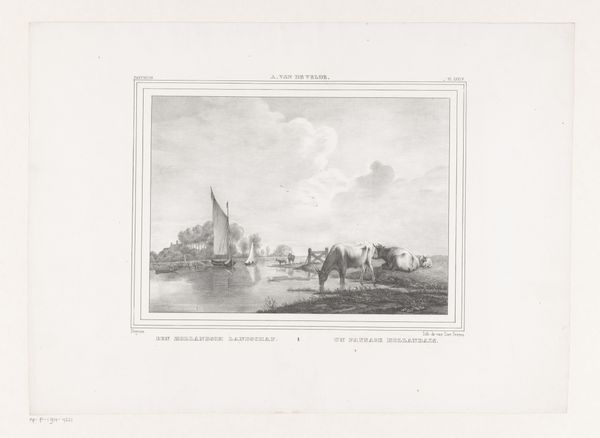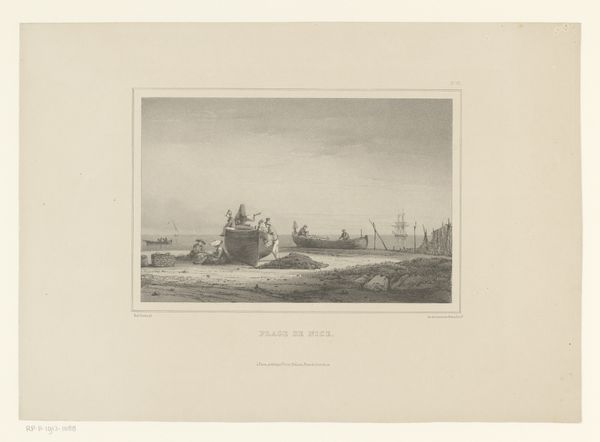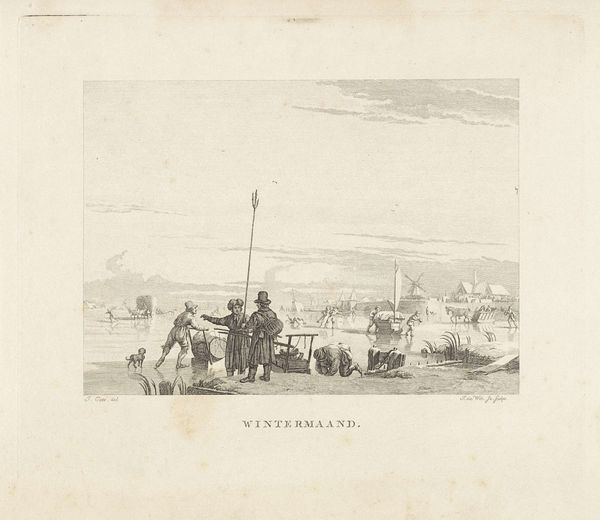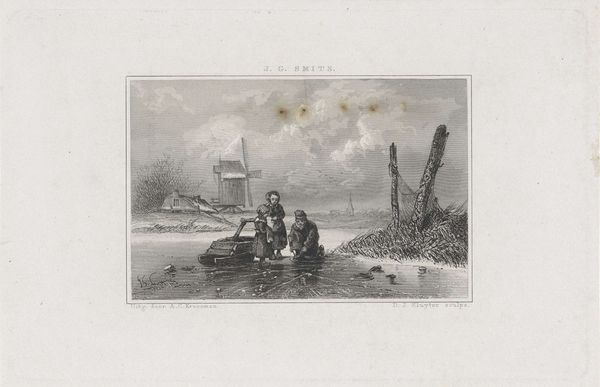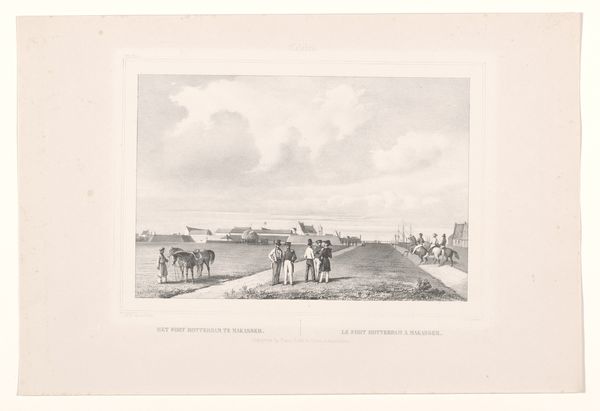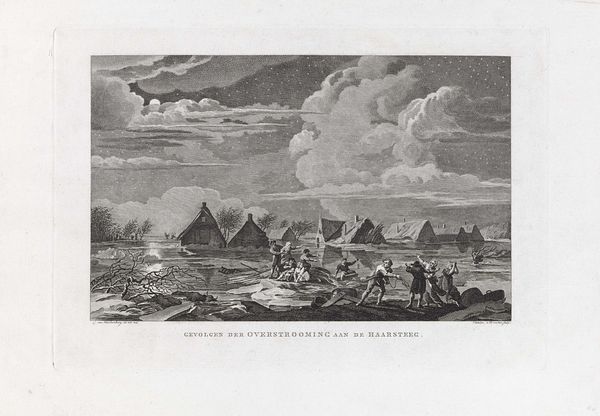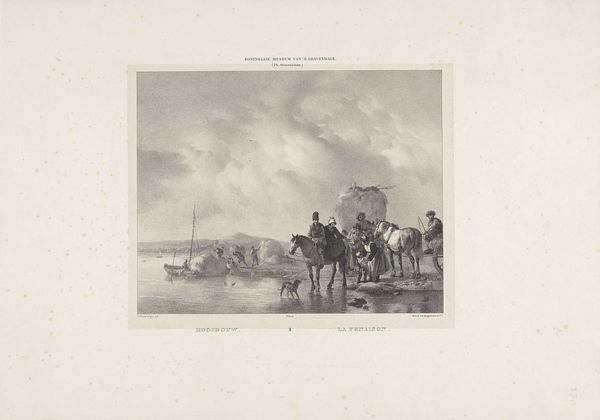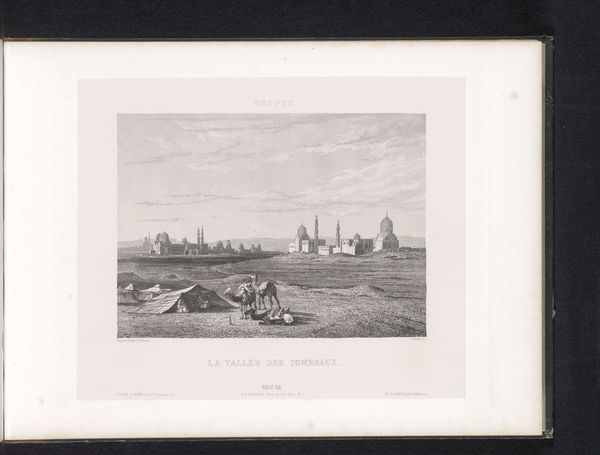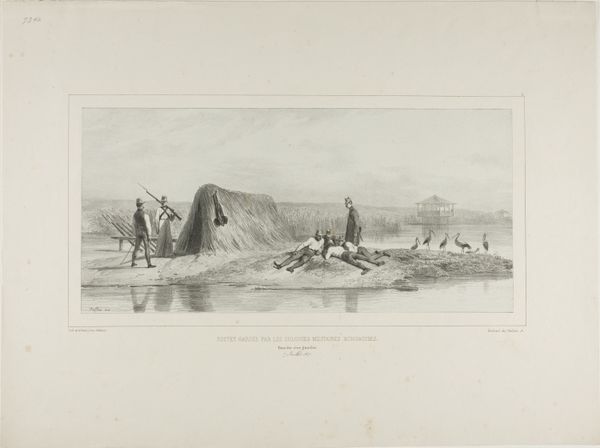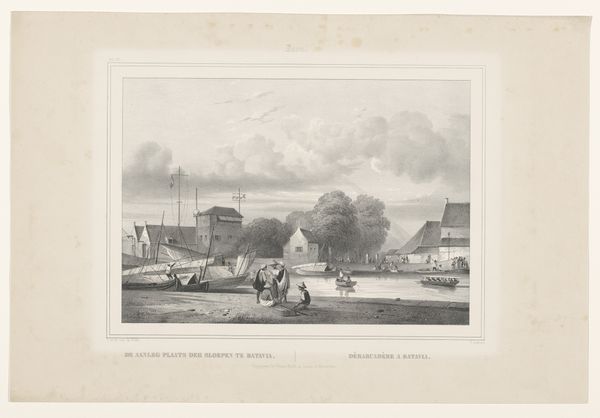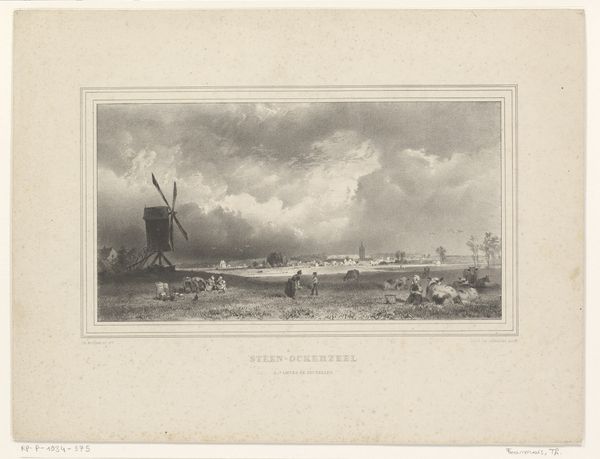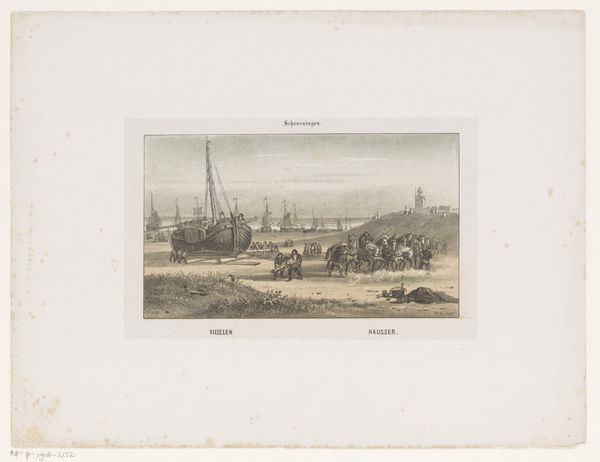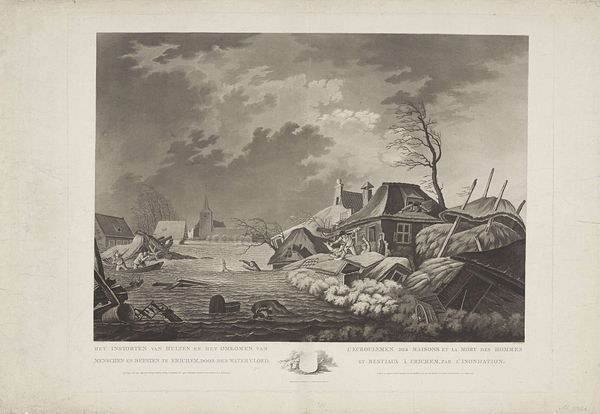
drawing, pencil
#
drawing
#
landscape
#
romanticism
#
pencil
#
genre-painting
Dimensions: height 375 mm, width 532 mm
Copyright: Rijks Museum: Open Domain
Editor: Here we have Gijsbertus Craeyvanger's "Strandgezicht," created in 1833 using pencil and drawing techniques. There's a somber quality to it, given the muted tones and focus on the everyday life of people by the sea. The way he captures light feels very deliberate. How do you interpret this work through a formalist lens? Curator: Well, first, let us consider the tonal range of the composition. Craeyvanger uses a limited palette to create depth through subtle shifts in value, from the luminous sky to the darker figures huddled near the tent. What do you observe about the arrangement of forms and shapes within the picture plane? Editor: The people grouped on the left and the activity receding into the distance on the right seem to create a balance, almost like a visual see-saw, drawing the eye through the scene. Curator: Precisely. Note also the rhythmic interplay of vertical elements, such as the tent pole and the distant masts of ships, contrasted by the strong horizontal line of the shoreline. This repetition of forms, echoing through the artwork, underscores the relationship between nature and humanity within the piece. The artist uses careful strokes of the pencil. The rough lines of the hut, and the softer lines in the clouds. What's your reaction? Editor: It all feels very controlled. And it focuses my attention not just on the subject matter but also the careful artistic choices within the frame. Thank you! Curator: A close analysis rewards us with such insights.
Comments
No comments
Be the first to comment and join the conversation on the ultimate creative platform.
